Range Of Motion (ROM)
What is a Range of Motion (ROM)?
Range of motion (ROM) refers to the extent or limit to which a joint can be moved. It’s essentially a measure of your joint’s flexibility and how far it can move in different directions
It is essential to determining and analyzing a person’s range of motion, flexibility, and functional ability. Numerous disciplines, including physical therapy, rehabilitation, sports medicine, and fitness training, frequently employ range of motion (ROM) assessments.
Goniometers
In physical therapy, a goniometer is a tool used to quantify the range of motion (ROM) of a joint. Two “arms” are hinged together, one of which is moveable and the other of which is stationary. Each is placed at predetermined locations on the body, with the goniometer’s center aligned at the relevant joint. The therapist can assess the range of motion accurately in degrees thanks to hash markings on the joint.
Even if you can buy one for yourself, goniometers are meant for highly skilled medical experts who know how to utilize them to achieve the best results. For example, a therapist may use the instrument to acquire a baseline range of motion assessment of a specific joint following an injury. After an intervention, they may measure again to confirm that the therapy is working.
Types of Goniometers
A classic goniometer is quite basic. It is often made of transparent plastic, however, occasionally metal is used as well.
They are available in several sizes: The range of motion around your finger, thumb, and hand joints may be measured using a little goniometer. Your hips and knees are measured using large goniometers.
While the most basic form of a goniometer is a physical piece of equipment, various versions have been devised. Most notably:
Digital goniometers: Studies have demonstrated that they’re as accurate or better than the simple models.
Goniometer apps for portable devices like smartphones: These employ your device’s accelerometer and gyroscopic technologies to monitor changes in the location of the phone. You just launch the app, set your phone in the precise location on your body part, and move your body through its possible range of motion. According to one research, this technique for determining range of motion is just as accurate as using simple goniometers.
Why Goniometers Matter?
While the range of motion can be overlooked as a sign of health, strength is a topic of much discussion. It is a sign of flexibility as one age.
If your therapist uses a goniometer to evaluate your range of motion and observes a reduced motion from your baseline, they can help you enhance your joint’s mobility with stretching and other therapies. Using a goniometer repeatedly might help you gauge your progress.
Techniques for using Goniometer
It is vital that a single notation system is employed in goniometry. The neutral zero approach (0 to the 180-degree system) is the most often utilized method.
To reduce the chance of instrumental errors, use the same goniometer every time.
The portion of the body to be measured with a goniometer should be properly exposed and free.
Each joint’s range of motion should be evaluated separately in order to rule out trick movement, which is the simultaneous movement of two joints, and muscular weakness, which might alter the reading.
Both active and passive range of motion should be measured and documented correspondingly.
All Joints of Normal Range Motion
The following are commonly recognized values for a normal range of motion (ROM) in each individual joint, expressed in degrees, notwithstanding individual variations. Exercise physiologists and physical therapists take a patient’s range of motion measurements and compare them to these standard ranges.
Hip:
- Flexion: 0–125 degrees
- Extension: 18 to 30 degrees.
- Hyperextension: 0 to 15 degrees (straightening beyond usual range)
- Abduction: 0 to 45 degrees (moving away from the body’s center axis)
- Adduction: 45 to 0 degrees (going in the direction of the body’s central axis)
- Lateral rotation: rotation from 0 to 45 degrees with respect to the center of the body
- Medial rotation in the direction of the body’s center, or medial rotation: 0 to 45 degrees
Knee:
- Flexion: 0 to 135–145 degrees
- Extension: 0 to 135–145 degrees
Ankle:
- Plantar flexion: 0 to 50 degrees of downward movement
- Dorsiflexion is the movement upward at 0 to 20 degrees.
Foot:
- Inversion: 0 to 35 degrees (turned inward)
- Eversion: 0 to 25 degrees (turned outward)
Metatarsophalangeal Joint of the Foot:
- Flexion: 0 to 30 degrees
- Extension: 0 to 80 degrees
Interphalangeal Joint of the Toe:
- Flexion: 0–50 degrees
- Extension: 50 to 0 degrees
Shoulder:
- Flexion: 0–180 degrees
- Extension: from 0 to 50 degrees
- Abduction Range: 0 to 120 degrees
- Adduction: from 120 to 0 degrees
- Lateral rotation: 0 to 90 degrees
- Medial rotation: 0 to 90 degrees
Elbow:
- Flexion: 0 to 160 degrees
- Extension: 0 degrees to 145 degrees
- Rotating inward by 0 to 90 degrees is known as pronation.
- Supination: 0 to 90 degrees
Wrist:
- Flexion: 0 to 90°
- Extension: from 0 to 70 degrees
- Redial deviation: 0 to 25 degrees
- Ulnar deviation: 0 to 65 degrees
Metacarpophalangeal (MCP):
- Abduction: 0 to 25 degrees
- Adduction: 20 to 0 degrees
- Flexion: 0 to 90 degrees
- Extension: from 0 to 30 degrees
Interphalangeal Proximal (PIP) Joint of the Finger:
- Flexion: 0 to 120 degrees
- Extension: 120 to 0 degrees
Interphalangeal Distal (DIP) Joint of the Finger:
- Flexion: 0 to 80°
- Extension: 80 to 0 degrees
Metacarpophalangeal Joint of the Thumb:
- Abduction: 0 to 50 degrees
- Adduction: from 40 to 0 degrees
- Flexion: 0–70 degrees
- Extension: 60 to 0 degrees
Interphalangeal Joint of the Thumb:
- Flexion: 0 to 90°
- Extension: from 90 to 0 degrees
How Range of Motion is Measured?
A goniometer is a portable, two-armed device made of plastic or metal. The gadget has numbers on it that indicate angular distance, just like a protractor would. After positioning your arms in certain positions throughout your body, your physical therapist can move your body in certain directions while measuring the range of motion that results.
ROM measurement is often a pleasant process. Measuring range of motion (ROM) can be uncomfortable in certain cases following surgery or injury, although the pain is generally localized and limited to the test itself.
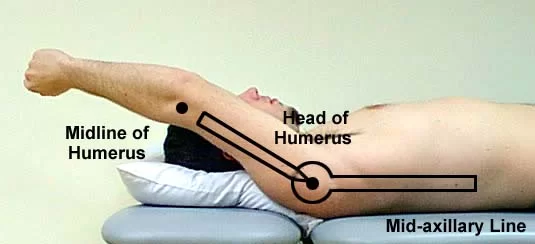
Passive Range of Motion :
When your muscles are not being used to move, a passive range of motion develops around a joint. While you unwind, your body is manually moved by someone else, such as your physical therapist. Passive ROM can also be provided by a machine. For instance, you might not be able to move your knee using your muscles following knee replacement surgery. Your physical therapist may use knee bending and straightening as a passive means of moving your leg.
Passive range of motion is typically employed in the early stages of recovery following surgery or trauma. Passive range of motion (ROM) can also be utilized to avoid contractures or pressure ulcers on the skin if paralysis prohibits normal movement of the body.
Active-Assistive Range of Motion :
You are the one who moves your body, or someone else may assist you. It might also originate from a machine or mechanical equipment.
One example is AAROM after shoulder rotator cuff surgery. You could be able to move your arm, but in order to reduce potential stress, someone else might be able to help your arm during a motion. After an accident or surgery, an active-assistive range of motion is usually employed when some healing has taken place and your muscle is able to contract, but protection is still needed to prevent harm to your recovering body part.
Active Range of Motion :
You can move with no assistance from a gadget or other person. When you have healed from an accident or surgery and require little to no protection from additional harm, active range of motion (ROM) is employed. Exercises involving active range of motion are included in this group.
If you are injured or have had surgery, make sure to discuss what kind of range of motion (ROM) is required with your physician or physical therapist.
You may make better decisions about your physical therapy regimen and have a more favorable physical therapy experience if you understand the range of motion and how it is utilized in physical therapy. One way to guarantee a quick and safe recovery to maximum functional mobility is to work toward the normal range of motion.
Factors That Affect Range of Motion:
Numerous factors, both environmental and intrinsic, might impact your ROM.
- The kind of joint some joints aren’t designed to move very much.
- The joint’s internal resistance
- bone structures that restrict motion
- For example, damaged muscle tissue from an earlier injury has less flexibility than normal muscular tissue.
- The range of motion that a muscle can acquire by contracting and relaxing
- Your age is an additional uncontrollable aspect. In one study, which looked at how age and sex affected joint ranges of motion, it was discovered that older individuals had fewer ROMs than younger ones. Furthermore, it took older participants longer to achieve a complete range of motion.
- It was discovered that gender significantly affected ROM. In several places, men’s ROMs were less than women’s, with the hand showing the biggest difference (29.7%).
- Certain joints and movements were discovered to be affected by these age and sex disparities, which may be explained by anatomical variations and the frequency of joint usage in activities across the groups.
Causes and Treatment For Limited Range of Motion:
The fragile tissues around a joint may have been harmed, leading to this. Diseases like osteoarthritis, rheumatoid arthritis, or other forms of arthritis may potentially be the reason.
For every joint, physical therapists typically recommend particular range-of-motion exercises. Three times a week, even ten minutes of stretching can assist increase the range of motion.
Another tool for maintaining and enhancing range of motion is the Continuous Passive Movement Machine (CPM), which is mostly used by physical therapists following surgery. pain in the knee joints All joint CPM devices, including CPM devices, are widely utilized. The research discovered that stretching with heat may result in slight increases in the range of motion.
Types of Exercise of ROM:
For every joint, physical therapists typically recommend particular range-of-motion exercises. The goal of these exercises is to gradually develop a range of motion while paying attention to any potential pain, stiffness, or edema.
- Active range of motion
- Active assistive range of motion
- Passive range of motion
- Strength and conditioning: A number of exercises are designed to build muscle strength, which may be achieved through gradual resistance training. When a muscle is very weak, gravity acts as sufficient resistance. Additional mechanical or manual resistance (such as weights or spring tension) is introduced after muscle strength reaches a good level.
In order to address the consequences of immobility, extended bed rest, or debilitation, general conditioning exercises incorporate a variety of activities. Restoring hemodynamic equilibrium, building endurance and cardio-respiratory capacity, and preserving muscular strength and range of motion are the objectives.
The goal of these workouts for the elderly is to potentially restore appropriate strength for their age while also strengthening their muscles to the point where they can function regularly.
Proprioceptive neuromuscular facilitation: This method allows patients with upper motor neuron injury and spasticity to feel muscle contraction and preserve the range of motion in the affected joint. It also helps to increase neuromuscular activity. For instance, people with right hemiplegia’s hemiplegic biceps contract when high resistance is applied to the left elbow flexor, bending the right elbow.
Exercises involving coordination:
By repeatedly performing an action that uses many joints and muscles at once, such as picking up an object or contacting a body part, these task-oriented exercises enhance motor abilities.
- Activities for ambulation: Patients must be able to balance while standing before moving on to ambulation activities. When doing a balancing exercise, a therapist often stands in front of or directly behind the patient and uses parallel bars. Patients transfer their weight from forward to backward and side to side while grasping the bars. Patients can go on to ambulation exercises after they can balance securely.
Patients can begin training to climb stairs or go over curbs if necessary as soon as they can walk on flat terrain securely. Individuals who use walkers need to acquire specific skills for walking over obstacles and upstairs. Ascending stairs involves using the stronger leg first, and descending with the weaker leg (good leads up; poor leads down). The social worker or physical therapist should make arrangements for safe railings to be erected on all stairs in the patients’ houses prior to the patients being released from treatment.
- Transfer training: Individuals who are unable to move freely from a bed to a chair, a chair to a commode, or a chair to a standing position typically need caregivers around the clock. Chairs and commodes’ height adjustments could be helpful. Occasionally, assistive technology can be helpful. For example, those who struggle to get up from a seated position can find that a chair with an elevated seat or one that lifts themselves up is helpful.
FAQs
Weak range of motion: what is it?
A joint is said to have a restricted range of motion if it cannot move completely and effortlessly in its typical way. A mechanical fault with the joint, edema around the joint, muscular stiffness, pain, or illness can all restrict motion.
How does ROM feel at the end?
This end feel is probably typical if the range of motion is acceptable and the hard feeling is clean.
How do you compute the range of motion?
A goniometer is a basic two-armed portable instrument used for measuring angles.
What is meant by “range of motion”?
Stretching and range-of-motion exercises assist scar tissue to rebuild, prevent adhesions from developing, enhance muscular tone, and reduce the risk of further injury. Stretching is done to restore lost joint mobility or prevent it from happening again.
What is the test of range of motion?
In goniometry. The most used tool for ROM measurement is a goniometer.”Goniometry” refers to the measuring of angles in rehabilitation, specifically the angles in each plane at the body’s joints.
What is the greatest range of motion?
For each joint in the body, there are set ranges that medical professionals regard as normal. A typical knee, for instance, should ideally be able to flex, or bend, to a degree between 133 and 153, according to one research.
What is the functional ROM?
The necessary range of mobility for people to preserve their maximum level of freedom as well as the ideal circumstances for carrying out everyday tasks is known as the functional range of motion. Plans for rehabilitation intervention are focused on helping patients gain anatomical range of motion.
How does ROM function?
ROM: What is it? One kind of non-volatile memory is read-only memory or ROM. This implies that data is received, permanently written on a chip, and maintained long when your computer is turned off. This data is used for things like your printer software and starting programs since it is coded so it cannot be altered.
How can the range of motion be increased?
All forms of stretching are useful for increasing range of motion (ROM), while PNF-type stretching could work better for faster results. Dynamic stretching is advised as part of the warm-up to prevent athletes from experiencing a loss in strength and performance from static stretching before a competition or activity.
Explain a limited range of movement.
A joint is said to have a restricted range of motion if it cannot move completely and effortlessly in its typical way. A mechanical fault with the joint, edema around the joint, muscular stiffness, pain, or illness can all restrict motion.
Full range of motion: why is it?
According to several writers, in order to get the most out of an activity, one must practice across its whole range of motion. In fact, most studies demonstrate that strength adaptations are unique to the joint angle that is treated; as a result, training has to incorporate entire joint excursion in order to develop strength.
ROM exercises: what are they?
In order to achieve mobility within or as close to the normal range as is practicable, progressive stretching is employed in range-of-motion exercises. In order to prevent pain from impeding growth, it is crucial that these workouts be increased gradually.
What does complete ROM mean?
The secret to range of motion is flexibility. The act of moving as far as is physiologically feasible during a particular workout is known as the full range of motion.
What does a motion’s range mean?
The whole range of motion possible for a joint is known as its range of motion (ROM), which also refers to the maximum amount that a body part may move around a joint or fixed point. Either active (independent) AROM or passive (assisted) PROM are used to quantify a joint’s range of motion.
References:
- Dhameliya, N. (2023f, May 13). Range Of Motion Of Body Joint And Physiotherapy Exercise. Samarpan Physiotherapy Clinic. https://samarpanphysioclinic.com/range-of-motion-of-all-joints/
- Physiotherapist, N. P. (2023a, May 27). Range of Motion (ROM) – Mobile Physiotherapy Clinic. Mobile Physiotherapy Clinic. https://mobilephysiotherapyclinic.in/range-of-motion/

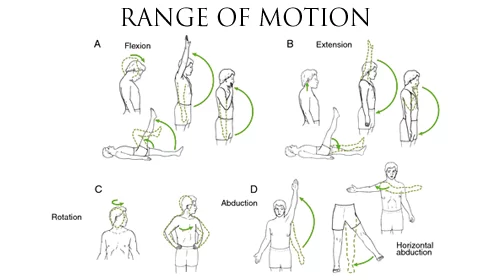
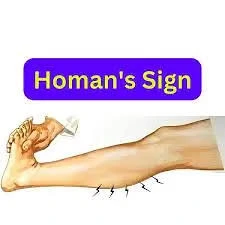
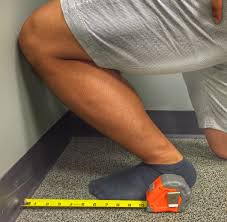
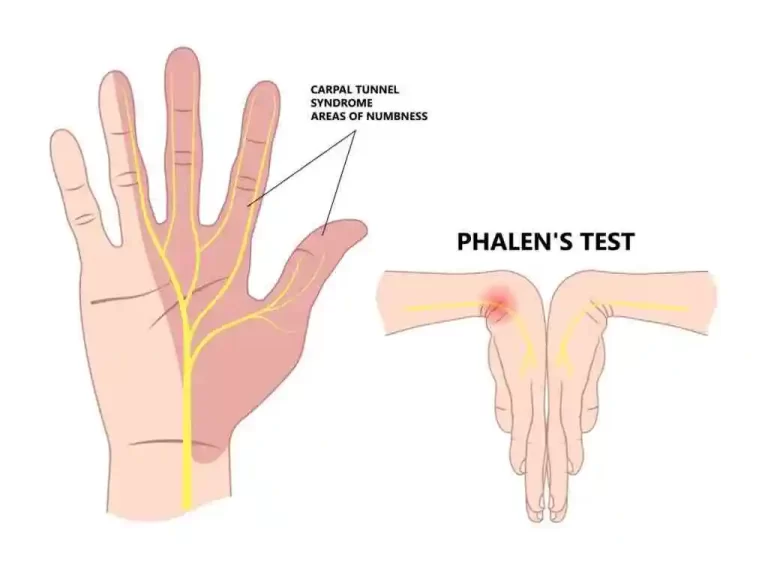
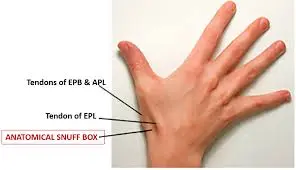
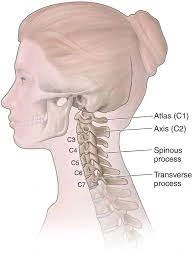

100 Comments